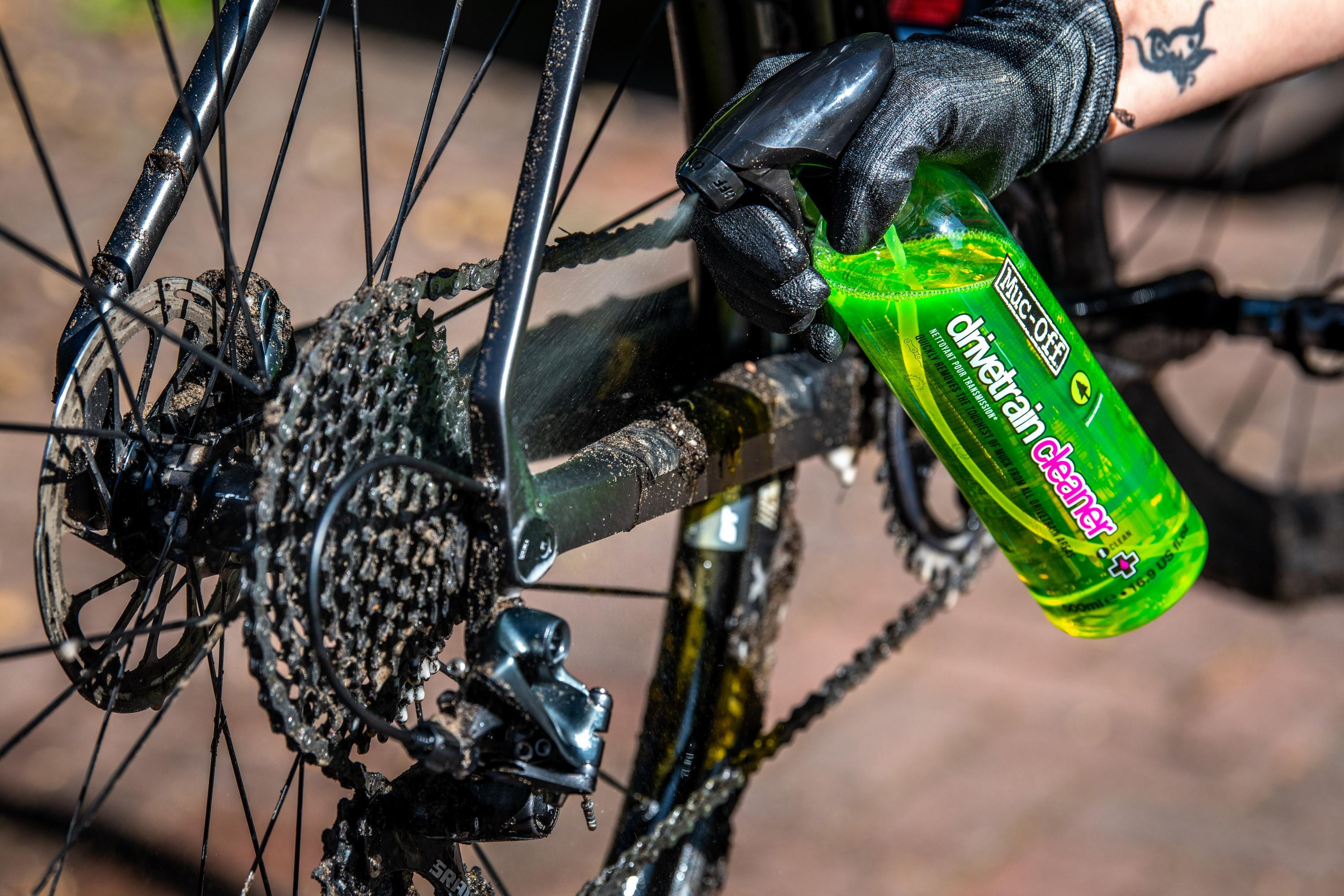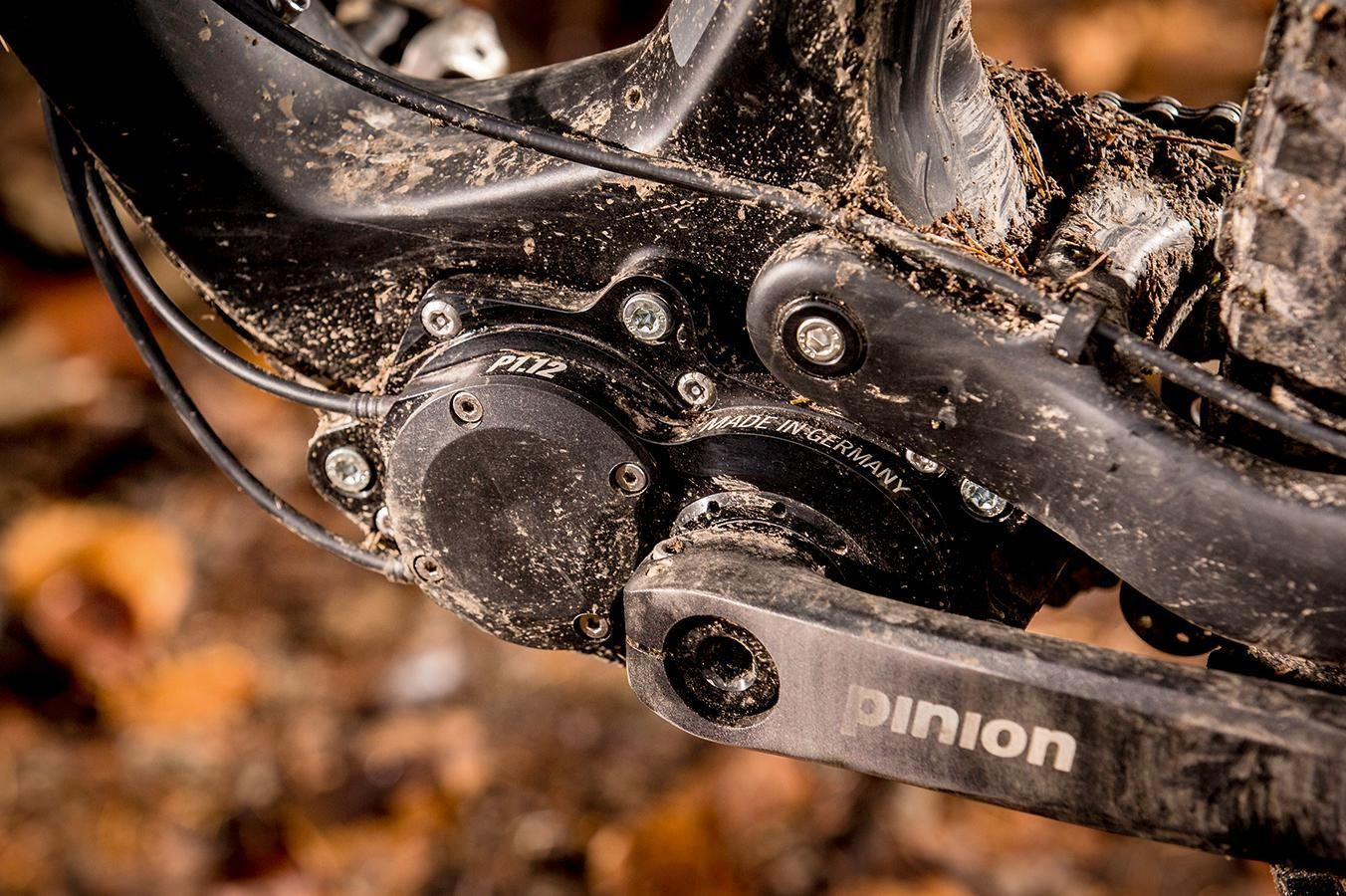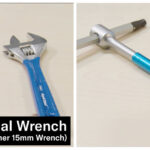Responsible for translating your pedaling power into trail speed, Mountain Bike Gears are what make your adventures roll. Grasping the technology, gear ratios, and underlying principles will significantly enhance your riding experience, allowing for smoother, faster, and longer rides.
For newcomers to mountain biking, the gear system might seem different from what you’re accustomed to on road or hybrid bikes. This guide is designed to demystify mountain bike gears, explaining their function, optimal usage, and how to select the right gear for any trail condition.
What Are Mountain Bike Gears?
Image: Close-up of a SRAM GX Eagle Transmission groupset highlighting the rear cassette and derailleur, key components of modern mountain bike gears.
When you apply pressure to your mountain bike pedals, the energy you exert is channeled through the drivetrain to the rear wheel, propelling you forward. The ease with which you turn the pedals is dictated by the gear ratio, a relationship between the front chainring and the rear cog. This ratio also influences your cadence (pedal rotation speed) and the distance covered with each pedal stroke.
Mountain bike gears empower you to adjust this ratio, enabling you to match your pedaling effort to the terrain’s steepness, your desired exertion level, and how much ground you want to cover per pedal revolution. By correctly selecting your gear to correspond with the trail’s incline, you maintain an efficient cadence and minimize wasted energy.
How Mountain Bike Gears Operate
 Haibike Lyke CF 11 full suspension mountain eBike – eMTB
Haibike Lyke CF 11 full suspension mountain eBike – eMTB
The 1x drivetrain system is overwhelmingly the most prevalent gearing system on contemporary mountain bikes and eMTBs. This setup features a single front chainring (hence ‘1x’) paired with a wide-ranging rear cassette. Gear changes are executed by a rear derailleur, controlled by a shifter mounted on the handlebar.
Activating the shifter prompts the derailleur to move the chain across the cassette, shifting into either a larger (easier) or smaller (harder) gear. Typically, a cable connects the shifter to the derailleur, facilitating this mechanical movement.
However, advanced electronic MTB groupsets, such as SRAM’s Eagle Transmission, employ a wireless signal to activate the derailleur, which is then moved by an integrated servo motor. This electronic system offers precise and consistent shifting performance.
While less common on modern trails, older 2x and 3x drivetrains still exist. These systems utilize a front derailleur to shift between multiple chainrings in the front, coupled with a narrower range rear cassette. The drawbacks of 2x or 3x systems for mountain biking include increased mechanical complexity, reduced chain security (more prone to chain drops), a narrower overall gear range compared to 1x, and added weight. The simplicity and wider range of 1x systems have made them the preferred choice for most mountain bikers.
Mastering Mountain Bike Gear Shifting
 Santa Cruz Heckler SL C GX AXS climbing trail near Whistler
Santa Cruz Heckler SL C GX AXS climbing trail near Whistler
Now that we’ve covered the mechanics of mountain bike gears, let’s delve into how to effectively use them while navigating trails.
How to Shift Gears on Your Mountain Bike
 Cannondale Trail SE 4 hardtail mountain bike
Cannondale Trail SE 4 hardtail mountain bike
As previously mentioned, gear changes on a mountain bike are made using handlebar-mounted shifters. These shifters typically feature two triggers, or paddles, allowing you to shift to an easier or harder gear using your thumb or index finger.
Take some time to familiarize yourself with the position and function of your shifters. Developing muscle memory will allow you to shift gears confidently on the trail without needing to look down, keeping your focus where it should be – on the path ahead.
It’s also crucial to minimize stress on the drivetrain when shifting. This practice extends the lifespan of your components, reduces maintenance frequency, and lowers the likelihood of mechanical failures like a broken chain.
Generally, avoid shifting to an easier gear (lower gear) while applying significant power to the pedals. At best, it sounds and feels rough, and at worst, it can damage your chain. Ideally, shift to the appropriate gear before tackling a steep incline, rather than mid-climb under heavy load. Shifting to a harder gear (higher gear) under power is less risky, but smooth, well-timed shifts are always preferable for drivetrain longevity and efficiency.
Selecting the Right Gear for the Terrain
Image: Detailed shot of a SRAM GX Eagle Transmission drivetrain on a Marin Rift Zone 29XR, emphasizing the wide range cassette that provides numerous gear options for varied terrain.
Effective gear selection is all about maximizing efficiency. Your goal is to be in a gear that allows you to pedal at a comfortable cadence while generating just enough power to maintain your desired speed for the upcoming trail section.
This is particularly vital on undulating singletrack trails. If you’re in too high of a gear, you’ll struggle to turn the pedals and tire quickly. Too low of a gear and you’ll be spinning rapidly without making efficient progress. Listen to your body and adjust your gears to find that sweet spot of sustainable power and cadence.
Essential Tips for Optimal MTB Gear Choice
There’s no single ‘magic gear’ for all situations. Your ideal gear choice depends on your fitness level, preferred cadence, and the gradient of the trail. However, these cadence-based tips will guide you in selecting the right gear and conserving energy:
1. Conquering Long, Gradual Climbs
For extended fire road climbs or gentle inclines, aim for a cadence of around 80 to 90 revolutions per minute (RPM). This range is generally considered efficient for endurance.
Resist the urge to push a very hard gear to impress others. While it might seem faster in the moment, you’ll fatigue your leg muscles much quicker, ultimately slowing you down. Consistent, moderate effort wins in the long run.
2. Tackling Short, Technical Ascents
When facing shorter, more technically demanding climbs with obstacles like roots, rocks, and tight switchbacks, a slightly lower cadence of around 60 RPM can be beneficial.
This lower cadence provides improved traction on slippery surfaces and makes it easier to lift your front wheel to navigate over obstacles or ledges. The slightly slower pace allows for more controlled movements and adjustments.
3. Accelerating and Gaining Speed
If you find yourself spinning excessively fast (spinning out) or pushing a gear that feels too resistant when trying to accelerate, you’re not maximizing your power output.
To accelerate efficiently, start by spinning at a higher cadence, around 100 RPM, and then shift to a slightly harder gear one click at a time on the rear cassette. You can shift to a harder gear under moderate power without issue.
4. Bigger Gears Aren’t Always Better
Pushing too hard of a gear puts excessive strain on your leg muscles and can negatively impact your handling. It becomes more difficult to react to trail features like roots and stumps, and harder to recover from unexpected losses of traction.
Often, a slightly easier gear that allows for a quicker cadence will actually be faster and more efficient in technical terrain, as it allows for better bike control and responsiveness.
Understanding Mountain Bike Gear Ratios
Image: Close-up view of a SRAM GX Eagle Transmission cassette, highlighting the range of cog sizes and illustrating the concept of gear range in mountain bike gears.
The sheer number of gears on your cassette isn’t the sole indicator of capability; the gear range is equally, if not more, important. Gear range defines the difference between your easiest and hardest gears.
Cassette range is calculated by dividing the number of teeth on the largest cog by the number of teeth on the smallest cog.
Consider the SRAM GX Eagle T-Type 12-speed cassette, which has a range from a 10-tooth smallest cog to a 52-tooth largest cog. Its gear range is calculated as follows:
- 52 / 10 = 5.2 = 520% range
So, how does chainring selection factor in? While the cassette determines the overall gear range of your 1x drivetrain, choosing a specific chainring allows you to shift this gearing range higher or lower, according to your riding style and typical terrain.
A smaller chainring, such as a 28-tooth or 30-tooth, provides lower (easier) gears, ideal for steep climbing. A larger chainring, like a 34-tooth or 36-tooth, enables higher (harder) gears, allowing for faster speeds on flatter terrain or descents.
Most mountain bikes are equipped with a 32-tooth chainring as standard, offering a versatile middle ground suitable for a wide range of riding conditions.
To calculate your current gear ratio for any gear, simply divide the number of teeth on your chainring by the number of teeth on the selected rear cog.
For example, with a 10-52t cassette and a 32t chainring, the gear ratios in your lowest and highest gears are:
- Lowest gear ratio: 32 / 52 = 0.615
- Highest gear ratio: 32 / 10 = 3.2
Let’s compare this to an older 2×10 drivetrain system, such as the Shimano SLX from 2013. This system typically featured 38/24t chainrings and an 11-36t cassette.
Using the same formulas, we can analyze the gear range and lowest/highest gear ratios:
- Gear range of the 11-36t cassette: 36 / 11 = 3.27 = 327% range
- Lowest gear ratio: 24 / 36 = 0.666
- Highest gear ratio: 38 / 11 = 3.45
Comparing these ratios highlights the significantly wider gear range offered by modern 1x drivetrains, especially in the easier climbing gears.
Troubleshooting Gear Performance Issues
 Muc-Off Drivetrain Cleaner
Muc-Off Drivetrain Cleaner
Like all mountain bike components, regular maintenance is crucial for ensuring your gears operate smoothly and reliably.
Cleaning and lubricating your drivetrain after each ride, especially in muddy or dusty conditions, is highly recommended. However, even with diligent care, certain issues can arise and affect gear performance.
New gear cables are prone to cable stretch. As new cables settle in under tension during initial rides, they can elongate slightly. This cable stretch results in inconsistent and vague shifting. Fortunately, this is usually easily remedied by using the barrel adjusters located on your shifter or derailleur to re-tension the cable.
Other shifting problems can develop over time due to wear and tear from riding. Derailleurs can be knocked out of alignment from impacts, or limit screws may require readjustment. In these cases, taking the time to properly index your gears is often the solution. Gear indexing involves fine-tuning the derailleur adjustments to ensure precise chain movement across the cassette. If indexing doesn’t resolve the issue, it may indicate a more significant problem requiring further attention.
A severely worn chain also leads to poor shifting performance and increases the risk of chain breakage. Furthermore, riding with a worn chain accelerates wear on the rest of your drivetrain components, including the cassette and chainring. Regularly checking your chain for wear and replacing it when necessary is a vital part of preventative maintenance.
Advantages of Electronic MTB Drivetrains
 Vitus Sommet 297 AMP full suspension mountain bike
Vitus Sommet 297 AMP full suspension mountain bike
Electronic drivetrains represent the latest advancement in mountain bike gearing technology, and they are generating considerable excitement within the mountain biking community.
The primary advantage of electronic shifting over traditional mechanical systems is enhanced consistency and precision. Mechanical gear cables are susceptible to stretching over time, requiring periodic re-tensioning to maintain crisp shifting.
Electronic shifting, in contrast, delivers consistent, accurate shifts every time. Once properly set up, electronic systems require minimal to no further adjustments.
Shifting with wireless electronic drivetrains is exceptionally fast and almost instantaneous, enabling riders to execute gear changes more rapidly and accurately, especially in challenging technical trail sections. This speed and precision can translate to smoother transitions and improved flow on the trail.
While wireless drivetrains currently come with a premium price tag, the technology is gradually becoming more accessible, with more affordable options starting to emerge.
A key consideration with electronic drivetrains is battery management. You’ll need to remember to charge your derailleur batteries before each ride to avoid being stranded in a single gear should the battery deplete mid-ride. However, battery life is typically quite good, often lasting for numerous rides on a single charge.
Exploring Mountain Bike Gearboxes
 Pinion gearboxes have found a niche mainly on mountain bikes
Pinion gearboxes have found a niche mainly on mountain bikes
Dirt, mud, and trail debris can wreak havoc on conventional external mountain bike drivetrains. Gearboxes offer a fully enclosed and sealed alternative, protecting the gearing mechanism from the elements. So, why haven’t gearboxes become the dominant choice in the mountain bike market?
To be practical for mountain bikes, gearboxes must be mounted in the frame’s bottom bracket area. Rear hub gears, commonly seen on city bikes, are unsuitable due to their unfavorable weight distribution for off-road riding. This requirement for a frame specifically designed for gearbox integration creates the first hurdle for wider adoption.
Gearboxes also tend to be heavier than traditional external drivetrains and can exhibit more drivetrain drag, reducing pedaling efficiency slightly. Shifter ergonomics for gearboxes haven’t yet reached the refinement of modern trigger shifters, and shifting is typically limited to coasting – you can’t shift effectively while pedaling under load.
However, gearboxes offer undeniable advantages in terms of durability, particularly in harsh riding conditions. Eliminating the derailleur and cassette from the rear wheel also noticeably improves suspension performance by reducing unsprung weight.
While gearboxes present promising benefits, further development is needed to address current limitations in weight, efficiency, and shifting ergonomics before they can truly challenge external drivetrains as the mainstream mountain bike gearing standard.

